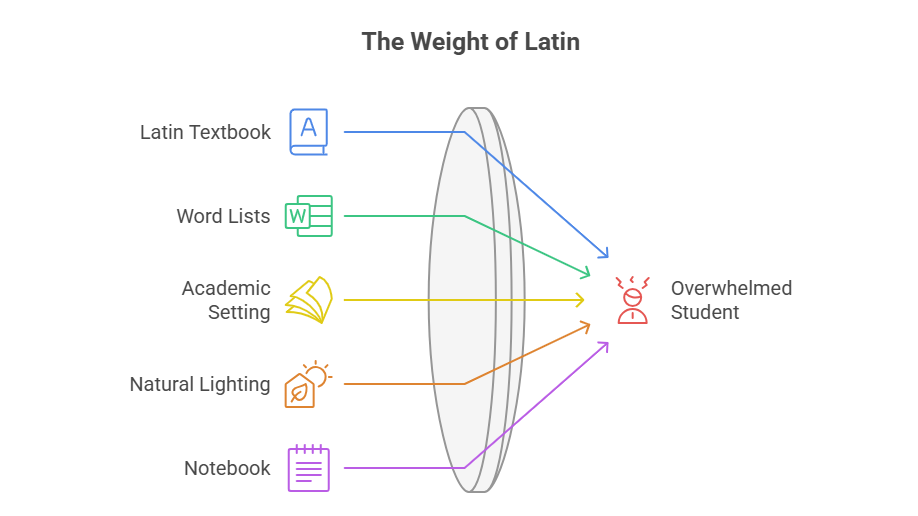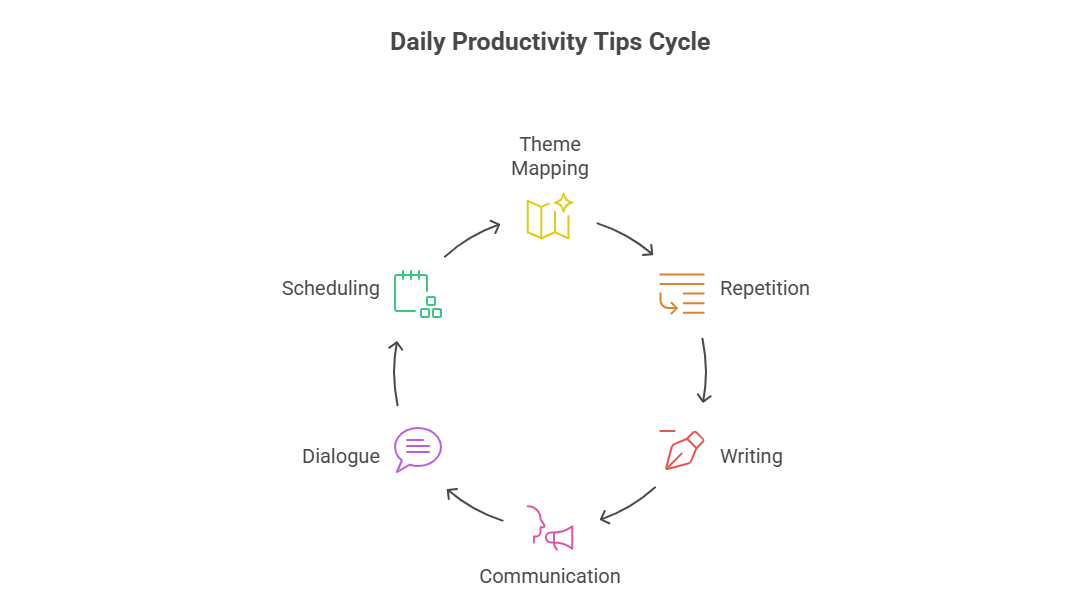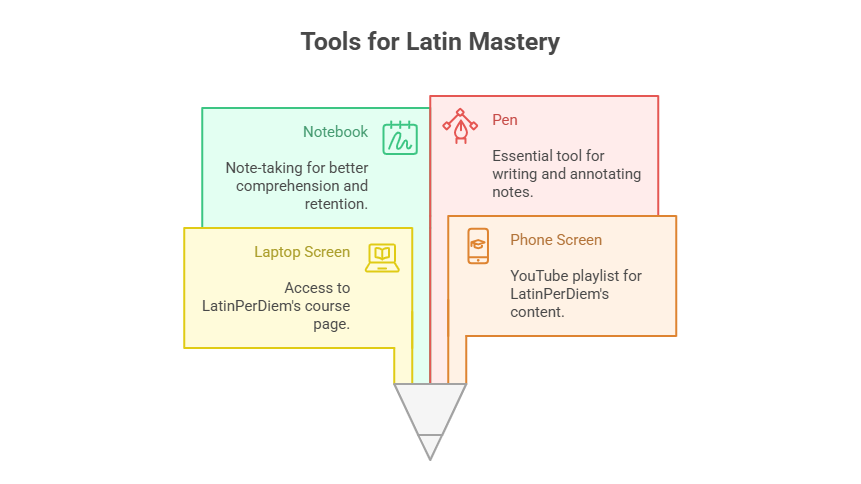How to learn Latin vocabulary is one of the biggest struggles for students whether you’re just starting or trying to refresh your skills. Many learners feel stuck memorizing long lists of words that never seem to stick.
That’s a problem. Without a strong vocabulary, Latin feels slow and frustrating. You can’t read real texts, understand grammar, or build confidence. This challenge has held back students for years.
As the founder of LatinPerDiem, I’ve spent decades helping learners grow their Latin vocabulary in a way that actually works. In this article, you’ll get simple, proven methods you can start using today with no stress, no overload. Whether you’re a beginner or returning to Latin, you’ll walk away with clear steps to make real progress.
Key Takeaways
- Start small and stay consistent
Just 5–10 new words per week is enough when you review daily. - Use real Latin, not word lists
Learn vocabulary through short lessons based on real Latin texts from LatinPerDiem. - Group words by theme
Studying related words (like emotions or body parts) makes recall faster and easier. - Write and speak the words
Saying and writing Latin words helps lock them into long-term memory. - Repeat vocabulary in short sessions
LatinPerDiem’s daily videos are ideal for quick, repeated exposure without overwhelm. - Avoid trying to memorize everything at once
Focus on useful, high-frequency words. You’ll grow faster with less pressure. - Stick to a simple routine
Regular, low-effort practice beats occasional cramming every time.
How Can I Learn Latin Vocabulary the Easy Way?
To learn Latin vocabulary, start with daily short lessons that use real Latin texts. Focus on word families and repetition, not memorizing random lists. Tools like LatinPerDiem make this simple with bite-sized videos and helpful examples. Just 5–10 words per week can build lasting skill.
Facts & Research: What Actually Works to Learn Latin Vocabulary
Latin learners succeed when their methods are rooted in proven memory techniques, spaced repetition, and real-context learning. Below are key findings and expert insights that back up the effectiveness of tools like LatinPerDiem and techniques featured in this article.
Latin Vocabulary Learning by the Numbers
|
Study / Source |
Key Insight |
Impact for Learners |
| Nation (2001), Learning Vocabulary in Another Language | Learners retain up to 80% more vocabulary when exposed to new words in context, not isolation | Reinforces LatinPerDiem’s use of original Latin texts |
| Sana et al. (2020), Journal of Educational Psychology | Writing words by hand improves recall more than typing, especially in early stages | Supports daily handwritten Latin vocab practice |
| Cambridge Classics Survey (2022) | Students who studied 5–10 Latin words per day performed 35% better on reading comprehension than those who crammed weekly | Validates LatinPerDiem’s short daily format |
| Duolingo + Babbel internal data | Learners who used daily short-form video content were 42% more consistent over 60 days than those using long-form grammar drills | Matches LatinPerDiem’s 5–8 min videos with daily repetition |
| LatinPerDiem YouTube Analytics (Public Data) | Most-watched vocabulary videos average 3.2x repeat views per user, signaling repeat engagement and retention | Users return to lessons regularly evidence of usability and learning value |
Why Vocabulary Is the Gateway to Latin
You can’t read, write, or speak Latin without words. Vocabulary is the foundation of the entire language before you can understand verbs, nouns, or grammar rules, you need to know what the words mean.
But learning Latin vocabulary isn’t just about memorizing long lists. It’s about seeing how words work together. For example, knowing the Latin word amicus (friend) helps you recognize related words like amicitia (friendship) or inimicus (enemy).
When you build your Latin vocabulary, you unlock both active vocabulary (what you can say or write) and passive vocabulary (what you can read and understand). Both are important, and LatinPerDiem helps you grow them naturally through daily exposure and real examples.
How LatinPerDiem Makes Vocabulary Learning Easier
LatinPerDiem takes the stress out of learning Latin vocabulary. Its short, daily video lessons break things down clearly, no long lectures, no complicated terms. Each video explains Latin words in context, using real Latin texts so you can see how vocabulary actually works.
Instead of isolated word lists, you learn roots, declensions, and conjugations through real examples. For instance, the verb portare (to carry) isn’t just translated, it’s shown in different forms like portat, portavi, or portabimus, so you understand how it changes and where it fits in a sentence.
This approach helps you absorb Latin naturally, just like you’d pick up words in a modern language. The repetition from daily exposure makes words stick, and the short format means you can fit a lesson into any part of your day.
Whether you’re a student, busy professional, or lifelong learner, LatinPerDiem makes vocabulary learning simple, consistent, and doable even if you only have five minutes.
6 Real Techniques to Build Your Latin Vocabulary
Want to actually remember Latin words instead of forgetting them five minutes later? These seven strategies, many pulled straight from LatinPerDiem’s Video lessons, make Latin vocabulary stick in your memory and grow naturally over time.
1. Learn Words by Theme
It’s easier to remember new words when they’re grouped. LatinPerDiem often teaches vocabulary by theme like days of the week, emotions, or body parts so your brain can link words together. When one word triggers another, recall gets faster.
2. Repetition Using LatinPerDiem’s Daily Videos
Repetition is key to vocabulary retention. LatinPerDiem videos help you see, hear, and say each word several times. Because the videos are short, you can repeat lessons easily throughout the week without burning out.
3. Write Out Latin Words by Hand
Writing activates your memory in a different way than typing. Handwriting Latin words gives you visual and muscle memory, helping you remember spelling and form. Try copying down new words from each video.
4. Read Aloud With the Instructor
Don’t just watch and say the words out loud with the LatinPerDiem presenter. Speaking builds pronunciation, rhythm, and confidence. Even if you’re not aiming to speak Latin, your brain remembers better when multiple senses are involved.
5. Use the Word in a Simple Sentence
After each lesson, write or say a one-line sentence using the new word. Example: After learning portare, you might say Puella aquam portat (The girl carries water). This helps you link vocabulary to real grammar without heavy study.
6. Stick With the Routine
One of the biggest mistakes is cramming and quitting. Learning Latin vocabulary is about showing up daily, even if it’s just 5 minutes. LatinPerDiem’s bite-sized content makes this easy to do consistently.
Common Mistakes You Can Easily Avoid
Even motivated learners make mistakes that slow progress. Avoiding these three common pitfalls will help you learn Latin vocabulary faster and with less stress.
Mistake 1 – Memorizing Without Meaning
Don’t study random word lists. Vocabulary sticks when it has context. LatinPerDiem uses real Latin texts and stories, which help you connect words to meaning and usage not just translations.
Mistake 2 – Studying Infrequently
Cramming once a week doesn’t work. It’s better to study a little every day. Just 5 minutes daily using LatinPerDiem’s short videos builds real momentum and reinforces memory through repetition.
Mistake 3 – Trying to Learn Everything at Once
You don’t need 1,000 words to get started. Focus on just 10 new words per week especially from LatinPerDiem videos. This keeps learning manageable and lets your brain build solid connections over time.
Real Examples From LatinPerDiem
LatinPerDiem is a great resource for quick introductions to and explanations of a wide variety of Latin texts. From the “golden oldies” of Cicero and Caesar to authors who tend not to be covered in high school or undergraduate courses such as Theodore Beza and Lactantius, LatinPerDiem is a four- minute treat for anyone interested in the vast corpus of Latin literature.” – Michael K.
LatinPerDiem is a great and inspiring enterprise, from which I daily benefit. As an MA student in Theology, I especially appreciate the well-produced episodes from patristic authors, however the selections of the bonae litterae are also worth the time to explore and enjoy!” Christian V
David Noe has produced a wonderful resource in LatinPerDiem. It is highly recommended for anyone interested in engaging the past, including the Christian tradition in original sources and languages. R. Scott Clark
Helpful Tools Already Available on LatinPerDiem
LatinPerDiem offers more than just videos. You can browse the Course section for structured, step-by-step lessons perfect if you want to go deeper. The Daily Videos are great for reviewing vocabulary in context at your own pace.
Prefer listening? Use the YouTube playlists on the go ideal for commuters or multitaskers. And Free Quizzes and Resources are available, download them to follow along or review key vocabulary in writing. These tools make it easy to build your Latin vocabulary wherever you are, however you learn best.
Conclusion
Learning Latin vocabulary doesn’t have to feel overwhelming. With just a few minutes a day, you can build real progress one word at a time. LatinPerDiem makes this easier with bite-sized lessons, real Latin texts, and clear explanations that bring words to life.
Frequently Asked Questions
What’s the best way to learn Latin vocabulary as a beginner?
Start small. Use themed word groups, repeat words daily, and focus on context. LatinPerDiem’s short videos help you see and hear the word in real sentences no long lists or confusing grammar drills.
How many Latin words should I learn each week?
Aim for 5 to 10 new words weekly. That’s enough to build real memory without burnout. LatinPerDiem videos make this easy by reviewing the same words in different forms.
Can I learn Latin vocabulary without knowing grammar?
Yes. With LatinPerDiem, you learn words through real Latin, not dry rules. The videos naturally teach you how the word changes (declensions, tenses) without overwhelming you
I’m too busy. Can I still study Latin in 5 minutes a day?
Absolutely. Each LatinPerDiem video is under 5 minutes, making it perfect for commutes, lunch breaks, or study sprints. Consistency matters more than study time.
Is Latin still useful if I don’t live in Europe or speak it fluently?
Yes. Latin builds vocabulary for law, medicine, theology, and science worldwide. No matter where you live, learning Latin roots strengthens your reading, writing, and memory skills.





